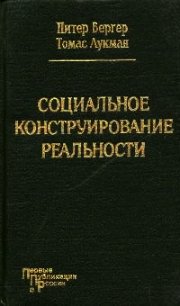Социальное влияние - Зимбардо Филип Джордж (читать книги онлайн бесплатно полные версии txt) 📗
Gibbs, N. (1989). Sick and tired. Time, July 31, 48–53.
Gilligan, С (1982). In a different voice: Psychological theory and women's development. Cambridge, MA: Harvard University Press.
Goethals, G.R., and DarleyJ. (1977). Social comparison theory: An attributional perspective. In J. Suls and R. Miller (Eds.), Social comparison processes: Theoretical and empirical perspectives (pp. 259–278). Washington, DC: Hemisphere.
Goethals, G. R., and Ebling, T. (1975). A study of opinion comparison. Unpublished manuscript, Williams College.
Goethals, G. R., and Zanna, M. P. (1979). The role of social comparison in choice shifts, journal of Personality and Social Psychology, 37, 1469–1476.
Goleman, D. (May 29, 1990). As bias crime seems to rise, scientists study roots of racism. The New York Times, pp. B5, B7.
Gorn, G. J. (1982). The effects of music in adverti — singon choice behavior: A classical conditioning approach. Journal of Marketing, 46, 94–101.
Gouldner, A. W. (1960). The norm of reciprocity: A preliminary statement. American Sociological Review, 25, 161–178.
Granberg, D., and Brent, E. (1983). When prophecy bends: The preference — expectation link in U. S. presidential elections, 1952–1980. Journal of Personality and Social Psychology, 45,477–491.
Granberg, D., and Brent, E. E. (1974). Dove — hawk placements in the 1968 election: Application of social judgment and balance theories. Journal of Personality and Social Psychology, 29, 687–695.
Gray, F., Graubard, P. S., and Rosenberg, H. (1974). Little brother is changing you. Psychology Today, March, 42–46.
Greenwald, A. G, (1968). Cognitive learning, cognitive response to persuasion, and attitude change. In A. G. Greenwald, Т. С Brock, and Т. М. Ostrom (Eds.), Psychological foundations of attitudes (pp. 147–170). New York: Academic Press.
Greenwald, A. G. (1980). The totalitarian ego: Fabrication and revision of persona] history. American Psychologist, 35, 603–618.
Greenwald, A. G., Klinger, M. R., and Liu, T.J. (1989). Unconscious processing of dichoptically masked words. Memory & Cognition, 17, 35–47.
Grice, H. P. (1986). Logic in conversation. In I. P. Cole and J. L. Morgan (Eds.), Syntax and Semantics (vol. 3, pp. 41–58). New York: Academic Press.
Cruder, C. L., Cook, T.D., Hennigan, К. М., Flay, B. R.,Alessis, C, and Halamaj, J. (1978). Empirical tests of the absolute sleeper effect predicted from the discounting cue hypothesis. Journal of Personality and Social Psychology, 36, 1061–1074.
Grusec, J.E. (1971). Power and the internalization of self — denial. Child Development, 42, 93–105.
Grusec, J.E., and Skubiski.S. (1970). Model nurturance, demand characteristics of the modeling experiment and altruism. Journal of Personality and Social Psychology, 14, 353–359.
Crush, J. E. (1976). Attitude formation and mere exposure phenomena: A nonartifactual explanation of empirical findings. Journal of Personality and Social Psychology, 33, 281–290.
Crush, J. E., McKeough, K. L., and Ahlering, R. F. (1978). Extrapolating laboratory exposure
research to actual political elections. Journal of Personality and Social Psychology, 36, 257–270.
Hamilton, D. L., and Trolier, Т. К. (1986). Stereotypes and stereotyping: An overview of the cognitive approach. In J. F. Dovidio and S. L. Gaertner (Eds.), Prejudice, discrimination, and racism (pp. 127–164). New York: Academic Press.
Hardyck, J. A., and Kardush, M. (1968). A modest, modish model for dissonance reduction. In R. Abelson et al. (Eds.), Theories of cognitive consistency: A sourcebook. Chicago: Rand McNally.
Haritos — Fatouros, M.. (1988). The official torturer: A learning model for obedience to the authority of violence. Journal of Applied Social Psychology, 18, 1107–1120.
Harper, R. G., Weins, A. N., and Matarazzo, J. D. (1978). Nonverbal communications: The state of the art. New York: Wiley.
Harris, P. R. (1980). Promoting health — preventing disease: Objectives Tor the nation. Washington, DC: U.S. Government Printing Office.
Hass, R. G. (1981). Effects of source characteristics on cognitive responses and persuasion. In R. E. Petty, Т. М. Ostrom, and Т. С Brock (Eds.), Cognitive responses in persuasion (pp. 141–172). Hillsdale, NJ: Erlbaum.
Hass, R. G., and Grady, K. (1975). Temporal delay, type of forewarning, and resistance to influence. Journal of Experimental Social Psychology, 11, 459–469.
Hastie, R., Landsman, R., and Loftus, E. F. (1978). Eyewitness testimony: The dangers of guessing. Jurimetrics Journal, 19, 1–8.
Hayes, S. Cand Cone, J. D. (1977). Reducing residential electrical energy use: Payments, information, and feedback. Journal of Applied Behavior Analysis, 10,425–435.
Heesacker, M. (1986). Counseling pretreatment and the elaboration likelihood model of attitude change. Journal of Counseling Psychology, 33, 107–114.
Heider, F. (1958). The psychology of interpersonal relations. New York: Wiley.
Herbert. F. (1965). Dune. Philadelphia: Chilton.
Herek, G. M. (1986). The instrumentality of attitudes: Toward a neofunctional theory. Journal of Social Issues, 42, 99–114.
Hersey,J. (1988). Behind barbed wire. The New York Times Magazine, Sept., 57–59. 73–76, 120–121.
Hitler, A. (1933). Mein Kampf. Trans, by E. T. S. Dugdale. Cambridge, MA: Riverside.
Hochbaum, G. (1958). Public participation in medical screening programs. DHEW Publication No. 572, Public Health Service. Washington, DC: U.S. Government Printing Office.
Horowitz, 1. A. (1980). Juror selection: A comparison of two methods in several criminal cases. Journal of Applied Social Psychology, 10, 86–99.
Hosch, H. M., Leippe.M. R., Marchioni, P. M., and Cooper, D. S. (1984). Victimization, self — monitoring, and eyewitness identification. Journal of Applied Psychology, 64, 280–288.
Hovland, C. I. (Ed.) (1957). Order of presentation in persuasion. New Haven, CT: Yale University Press.
Hovland, C. I., and Janis, I. L. (1959). Personality and persuasibility. New Haven, CT: Yale University Press.
Hovland, С. I., Janis, I. L., and Kelley,H.H. (1953). Communication and persuasion. New Haven, CT: Yale University Press.
Hovland, C. I., Lumsdaine, A. A., and Sheffield, F. D. (1949). Studies in social psychology in World War II. Vol. 3: Experiments in mass communication. Princeton, NJ: Princeton University Press.
Hovland, С. /., and Mandell, W. (1952). An experimental demonstration of conclusion — drawing by the communicator and by the audience. Journal of Abnormal and Social Psychology, 47, 581–588.
Hovland, С I., and Weiss, W. (1951). The influence of source credibility on communication effectiveness. Public Opinion Quarterly, 15, 635–650.
Huesmann, L. R., Eron, L. D., Klein, R., Brice, P., and Fischer, P. (1983). Mitigatingthe imitation of aggressive behaviors by changing children's attitudes about media violence. Journal of Personality and Social Psychology, 44, 899–910.
Inbau, F. E., and Reid,J.E. (1962). Criminal interrogation and confessions. Baltimore: Williams and Wilkins.
Inbau, F.E., Reid.J.E., and Buckley, J. (1986). Criminal interrogation and confessions. Baltimore: Williams and Wilkins.
Insko, С A., Smith, R. H., Alicke, M. D., Wade, J., and Taylor, S. (1985). Conformity and group size: The concern with being right and the concern with being liked. Personality and Social Psychology Bulletin, 11, 41–50.




